Do you have the Human Design 2/5 profile? Then read this blog post to find out how your profile is made up and how you can use your profile to develop naturally in your professional life. Have fun reading!
Basically, the Human Design profiles are derived from the six lines of the basic structure of a hexagram from the I Ching, the Book of Changes. In Human Design, there are 12 line combinations that make up a Human Design profile. In your case, these are lines 2 & 5. In your Human Design Chart, you will also find your two lines as a number behind the dot on your conscious sun (personality) and your unconscious sun (design).
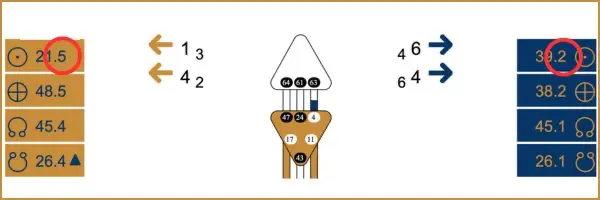
General information on the Human Design lines
Each Human Design Profile embodies a unique perspective on the world and a specific approach to life. Interesting traits can be derived from this. You are probably aware of the characteristics of the first number, line 2. This number is on the right, conscious side of your Human Design chart (line of the gate in the sun sign).
The traits of the second digit, line 5, (left side of your chart) are rather unconscious to you, especially if you have not yet reached the second half of your life and have not yet fully integrated these traits into your personality. The Human Design 2/5 profile is equipped with exciting character traits in which you are sure to recognize yourself in your professional life. So be curious to see how the 2/5 profile unfolds.
In traditional human design, certain character traits are assigned to the six lines of a hexagram (see illustration). These characteristics can also be used to draw interesting conclusions about you as an employee or self-employed person.
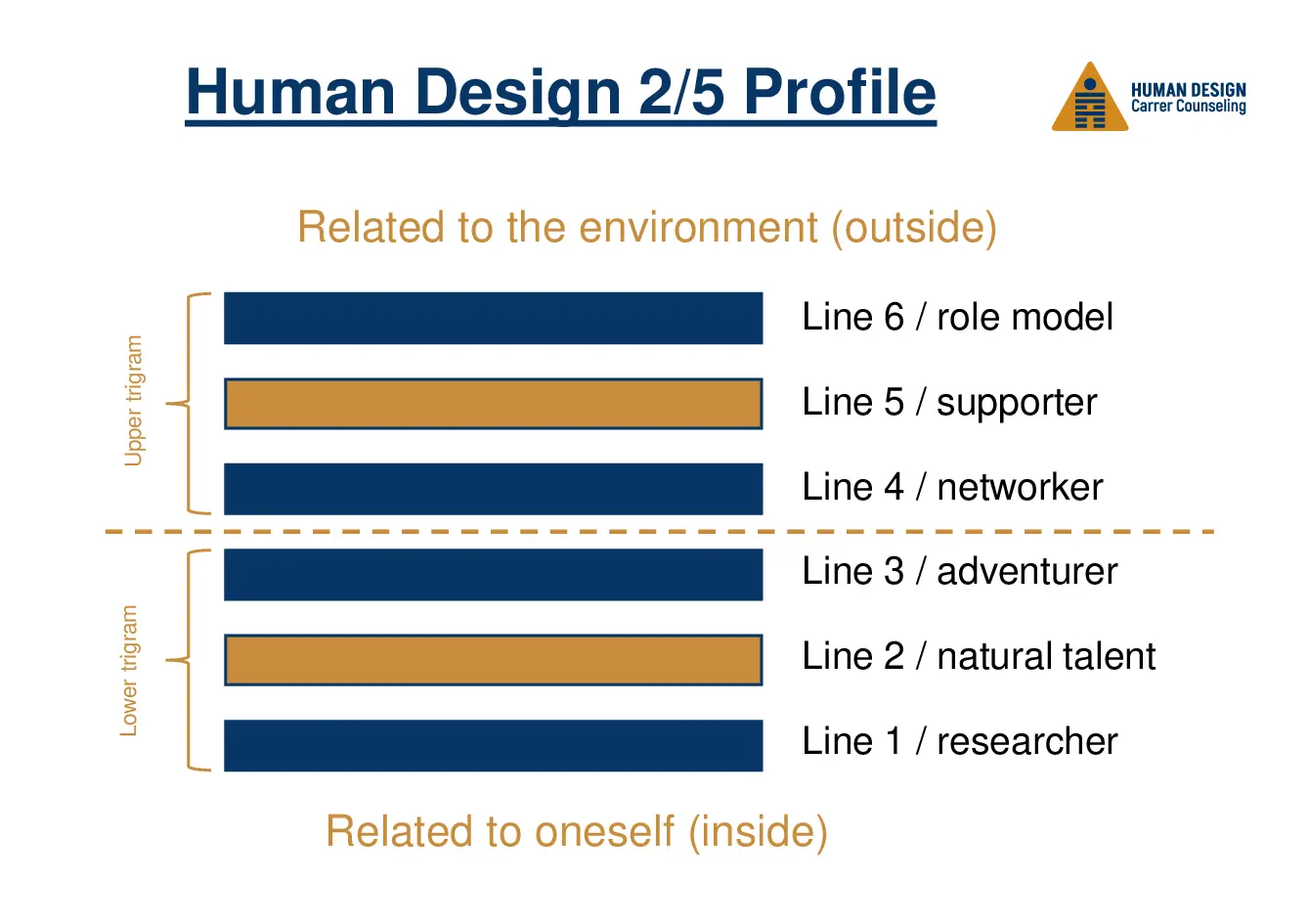
Discover the Human Design 2/5 profile in its line quality
Between the first three and the second three lines (lower and upper trigram) there is a change in the way you surrender to life. With the first three lines of the hexagram (seen from bottom to top), the unfolding of your life relates very much to your own core being. In general, it is a self-centered way of learning for life. So if you have a profile with line 1, 2 or 3, you are discovering life in a self-centered way.
Lines 4, 5 and 6 (upper trigram) develop strongly in relation to your fellow human beings (including a professional environment). Human Design profiles can consist of two self-related lines (e.g. Human Design 1/3), two environment-related lines (e.g. Human Design 4/6) or a mix of self-related and environment-related lines, as in the Human Design 2/5 profile.
The Human Design 2/5 profile at work
The Human Design Profile 2/5 combines the line qualities of the second and fifth lines of the hexagram. The second line, also known as the natural talent, brings with it a tendency towards retreat and inner contemplation. You often feel most comfortable when you are alone or in a familiar environment where you can pursue your natural talents and inclinations. You have an innate talent in one or more areas, which often develops naturally and without much effort. Sometimes you don’t even realize how gifted you are because these abilities are so deeply rooted in you. At work, you can use these natural talents to excel in your field and accomplish tasks with ease and efficiency.
The fifth line of the Human Design 2/5 profile, the hero, gives you a charisma that is often unintentionally perceived by others and projected onto you. Others often see you as a problem solver or someone who has answers to their questions. This characteristic can lead to high expectations and misunderstandings, as people believe that you can do or offer more than you actually can or want to. However, you can also use this perception to find innovative solutions to professional challenges and be a valuable asset to your team or organization.
In your combination of reclusive, talented second line and influential fifth line, your strength as a 2/5 profile lies in using your gifts and talents to exert influence and help others. It is important that you balance your need for seclusion while being realistic with the expectations of others. Communicate clearly what you can and want to do. Use your skills and knowledge to bring about positive change and be mindful of your boundaries.
3 tips for your professional development
Tip 1: Use your natural talents in a targeted manner
With a Human Design 2/5 profile, you have innate skills that give you an advantage in your professional field. Find them, accept them and use them consciously to excel in your field. And be open to developing your skills further and taking on new challenges that highlight your strengths. Because no master has ever fallen from the sky.
Tip 2: Find the balance between being alone and social interaction
Use your independence and ability to work alone, but also be open to teamwork and collaboration. Your 5th line can help you to influence and win others over to your ideas. The balance between being alone and social interaction (teamwork) is the key to success.
Tip 3: Manage expectations and communicate clearly
Because of your 5th line, others may have high expectations of you and your abilities. It is important to remain realistic and communicate clearly what you can and cannot do. Set clear boundaries and be transparent about your skills and capacities to avoid misunderstandings and being overwhelmed. If you are authentic and honest, you will build more and more trust in the workplace.
FAQ: Questions about Profile 2/5 in Human Design
What distinguishes the Human Design 2/5 profile?
The Human Design 2/5 profile combines the characteristics of the natural talent (2nd line) with those of the hero (5th line). People with this profile often have innate talents and a tendency to be withdrawn, coupled with a great attraction and influence on other people.
What are the professional strengths of the Human Design 2/5 profile?
Professionally, people with a Human Design 2/5 profile are characterized by their natural talents and ability to work independently. They are effective problem solvers and can convince others and win them over to their ideas through their projective charisma. Their independence makes them valuable, autonomous employees.
What are the professional strengths of the Human Design 2/5 profile?
Professionally, people with a Human Design 2/5 profile are characterized by their natural talents and ability to work independently. They are effective problem solvers and can convince others and win them over to their ideas through their projective charisma. Their independence makes them valuable, autonomous employees.
What personal development tips are there for someone with a Human Design 2/5 profile?
For personal development, it is important to recognize and use your own talents, but also to maintain social contacts and build networks. People with a Human Design 2/5 profile should learn to communicate their boundaries clearly and not be overwhelmed by the expectations of others. It is also important for the Human Design 2/5 profile to find a balance between independence and social influence.
How would you describe the combination of the Human Design types with the Human Design 2/5 profile?
Here are suggested combinations for Human Design types with the Human Design Profile 2/5:
- Manifestor 2/5: Problem solver and initiator in the background
- Reflector 2/5: Withdrawn problem solver in observer mode
- Manifesting generator 2/5: Withdrawn problem solver on the ball
- Generator 2/5: Withdrawn problem solver and implementer
- Projector 2/5: Withdrawn problem solver with powers of observation
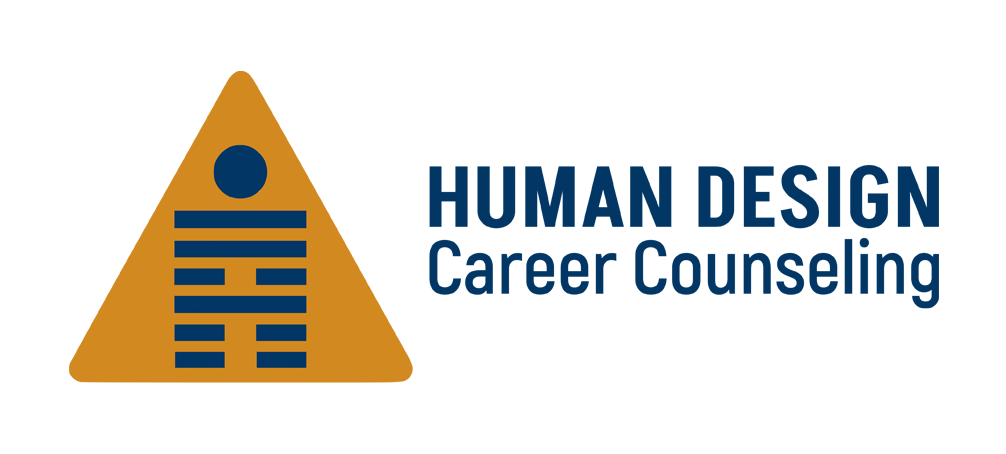
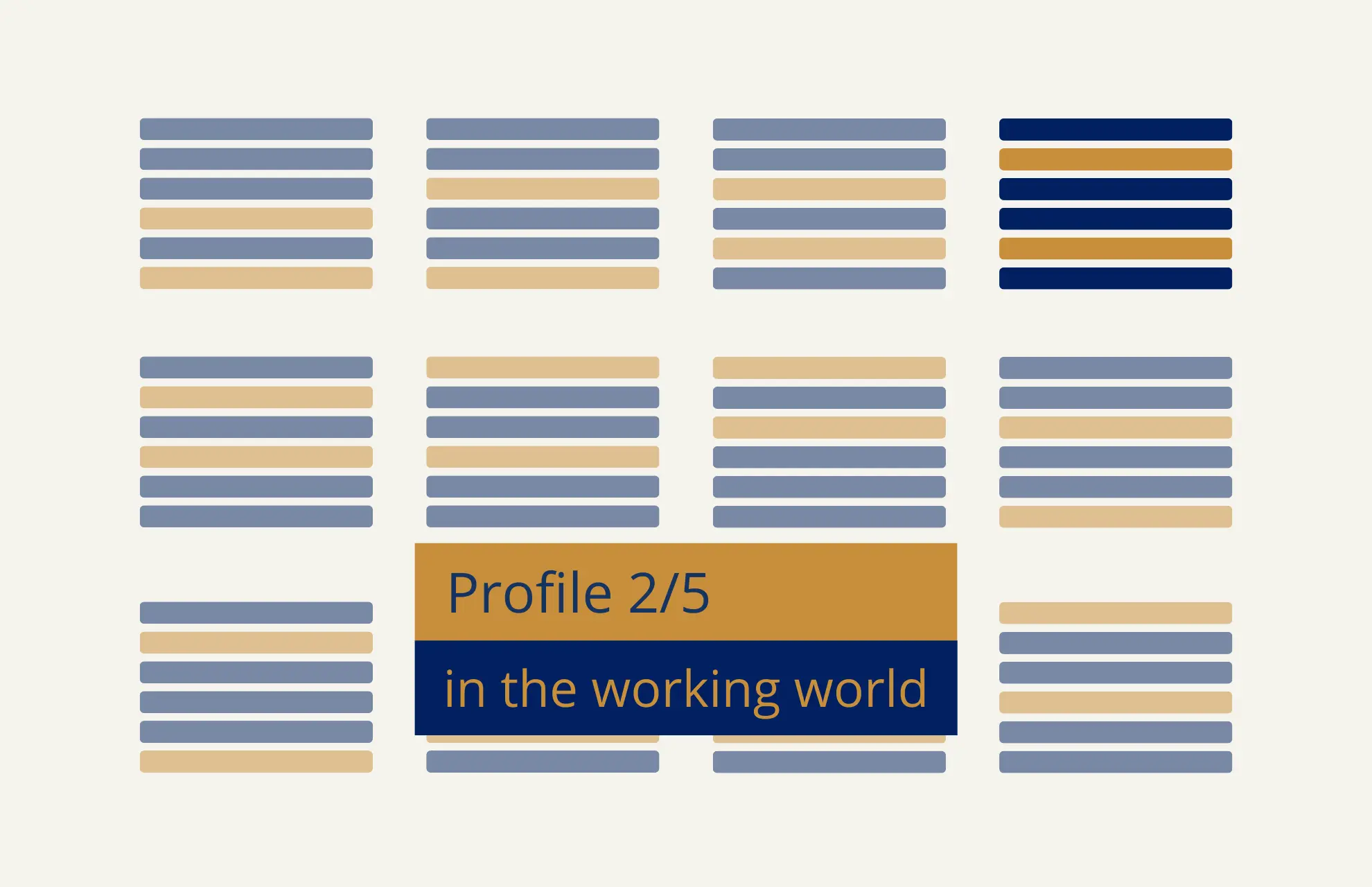
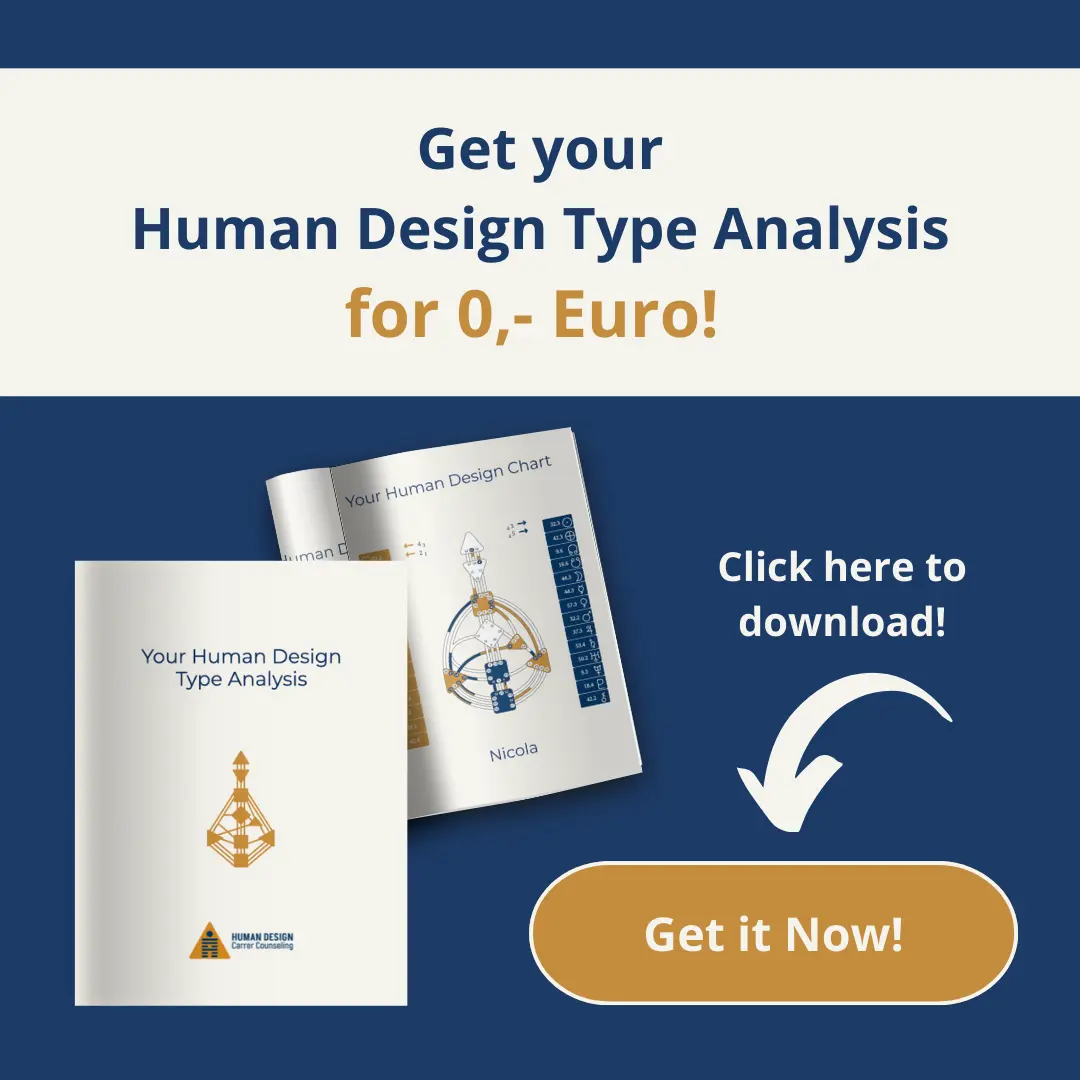


0 Comments